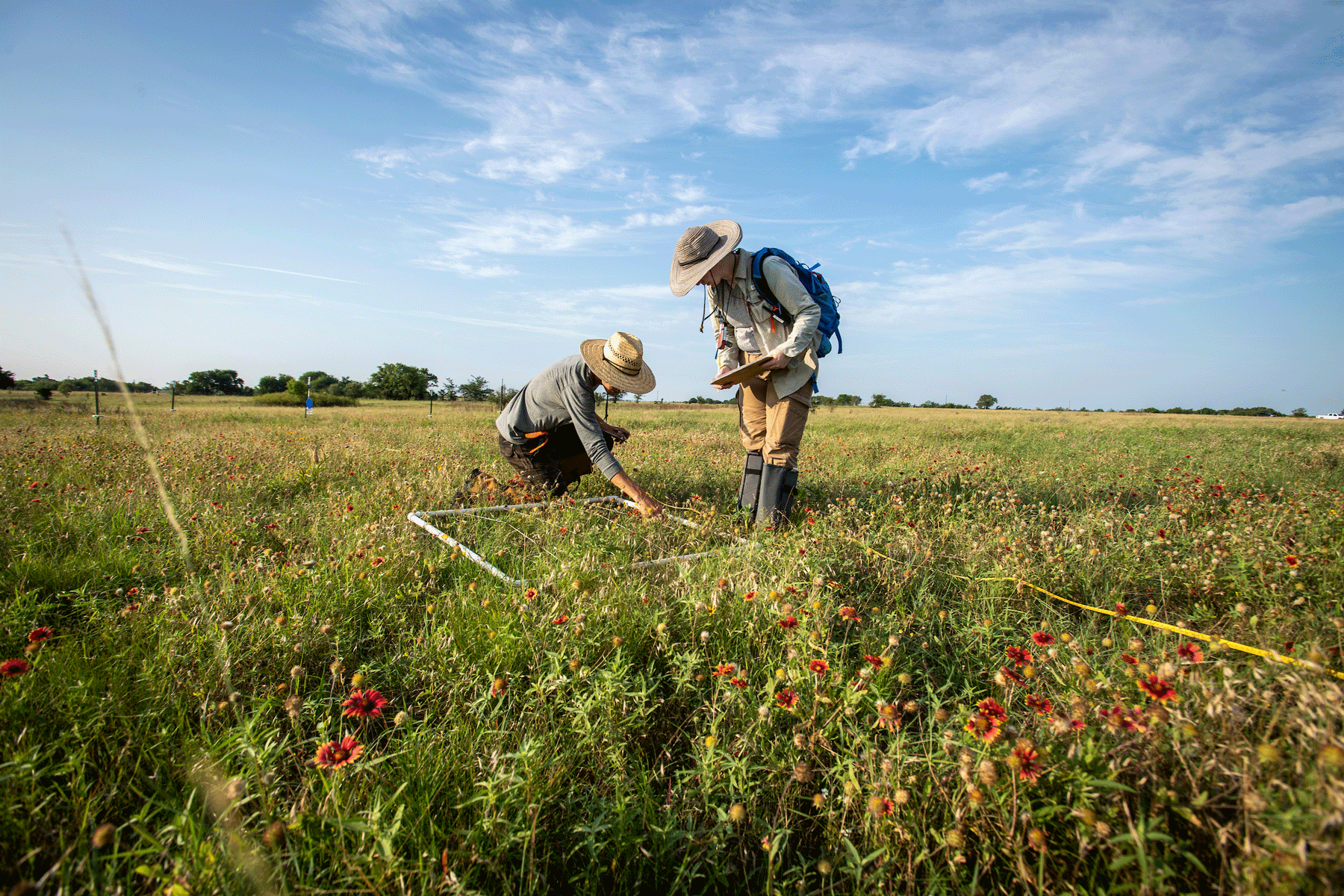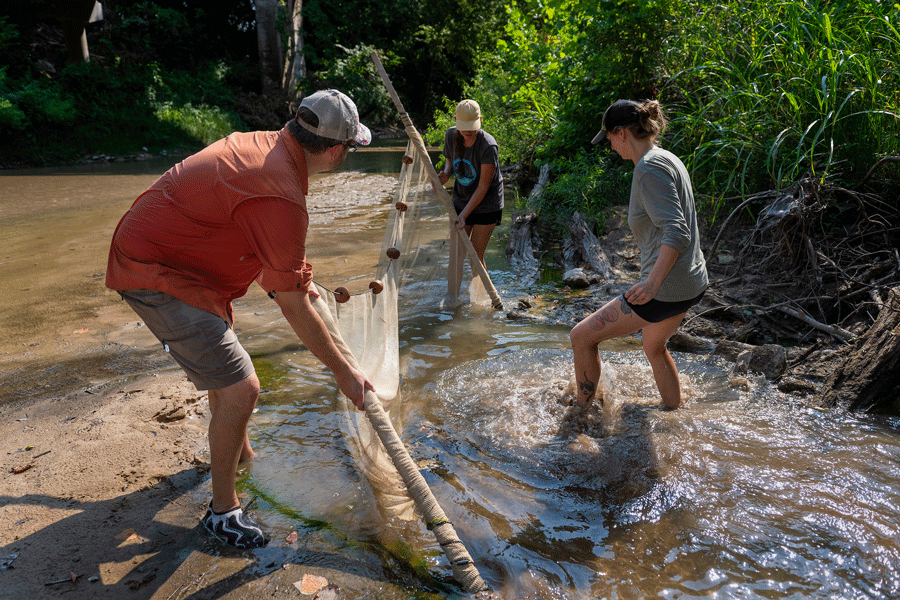
A collaboration between UNT researchers and the Dixon Water Foundation is helping to create sustainable ranch practices and further basic science about biodiversity.
The Dixon Water Foundation promotes healthy watersheds through sustainable land management to ensure that current and future generations of Texans have the water resources they need. The foundation owns and operates several working cattle ranches, including two outside of Decatur, just west of Denton, which seek to demonstrate environmentally and economically sound ways to manage rangeland. The ranches use a method called multi-paddock grazing where cattle are moved around very frequently so they don’t overgraze any particular area. They partner with local researchers to monitor how the environment responds to their stewardship and fund grants, including one that is supporting UNT biological sciences associate professor David Hoeinghaus’ studies on the biodiversity and ecosystem functioning of the ranches’ aquatic habitats.
“His work fits our mission,” says Melissa Bookhout, North Texas Education Program Coordinator for the Dixon Water Foundation. “We’re impressed with all the research that’s been going on at UNT.”
Bookhout says that the foundation wants to document the effectiveness of what they’re doing to demonstrate to other ranchers that it is possible to make money while conducting alternative healthy ranching management.
“We want to have the science behind our management practices,” Bookhout says. “As a result, the aquatic diversity and the pollinators benefit.”

Additionally, UNT assistant professor of biological sciences Elinor Lichtenberg is looking at insect pollinator communities on the ranches. Both researchers are comparing the biodiversity across different variations of grazing practices, such as the amount of time cattle spend in a particular area, beginning with a baseline inventory of aquatic species and insect species. Later they hope to broaden their scope to look at land management as a whole to determine what types of practices impact those communities.
“The way Dixon Water Foundation manages the landscape has advantages for the sustainability of their ranch ecosystem, restoring aquifers and improving resiliency,” Hoeinghaus says, adding that he is focusing on water monitoring.
Because aquatic habitats can change drastically from season to season and year to year, Hoeinghaus and his team are working to identify the distribution of water on the ranch in terms time and space.
“These types of aquatic habitats may only be available for a short period of time, accumulating from surface flows after a storm, but then through drought, they dry up,” Hoeinghaus says. “These short-term and highly dynamic water bodies can still harbor insect diversity — in some cases fishes as well. So, our initial objective is to systematically monitor water across the landscape. Where does water occur? How long does it persist in different areas? Then we assess how nutrient concentrations of these water bodies vary through time, the diversity in terms of aquatic insects and fishes in these different water bodies, and how aquatic and terrestrial food webs are linked.”
This information is gathered and compared across different areas of the Dixon ranches where different histories of adaptive multi-paddock grazing are used. Their data will enable an assessment of how this alternate grazing management practice compares with traditional grazing management practices in terms of aquatic ecosystem condition and functioning. Ultimately, both the Dixon Water Foundation and researchers at UNT seek to improve best management practices for long-term sustainability of rangelands.

Both Hoeinghaus and Lichtenberg’s teams include graduate and undergraduate students who are able to conduct hands-on field research.
“We go out and sample the pollinator community. We also are quantifying both food — the flowering plants that might be providing nectar and pollen — and shelter resources,” Lichtenberg says. Her graduate student, Shannon Collins, also is looking at soil properties and how they affect the plant community and flower-visiting insect communities.
“Understanding how these factors drive changes in the pollinator communities is really important if we want to develop data-driven land management practices,” Lichtenberg says. “That helps us support biodiversity, while also allowing farmers to use their land for the purposes that they need to sustain their livelihoods.”

